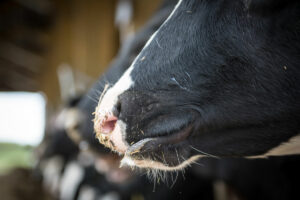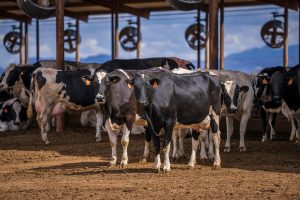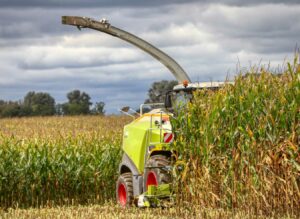Alvaro Garcia
Propionic acid has been used successfully as mold inhibitor in fermented feeds such as silages and high moisture corn. Calcium propionate, the salt of propionic acid, has similar antifungal properties offering the same efficacy as the acid form once ionized in water. Because of its convenience, calcium propionate has been the product of choice when ensiling forages.
The ruminant pre-stomachs, particularly rumen and reticulum, are quite unique and work in a symbiotic relationship between the microorganisms in its fluid, and the ruminant itself. This allows the host to digest fibrous carbohydrates for which it has not developed specific digestive enzymes.
The young calf, however, has not fully developed this capacity and behaves almost like a single-stomached animal, relying mostly in milk and highly digestible concentrates to grow. Dairy farmers have used different approaches to accelerate the transition to a functioning rumen so that growing ruminants can use less expensive forages in their diets. This of course must be done without negatively affecting development and performance.
Effects of calcium propionate on the digestive system of calves
Feed fermentation in the rumen supplies volatile fatty acids (VFA) which are excretion products from rumen bacteria. These VFA are essential to the development of rumen papillae (ultimately responsible for their absorption) but are also precursors of energy to the host once absorbed. Both propionate and butyrate have been demonstrated to stimulate papillae growth, with the latter also showing an effect in intestinal development and growth.
The salt of butyric acid (sodium butyrate) when added to the starter seems to stimulate rumen development directly. This effect has also been observed with calcium propionate, however, the mechanism has not been clearly determined. Propionate is one of the main VFAs produced from feed fermentation in the rumen, and a key substrate to supply glucose to the ruminant through gluconeogenesis.
A recent experiment (Cao et al., 2020) evaluated calcium propionate supplementation and its effects on rumen microbial population and growth performance in calves. Male Jersey calves of 7 ± 1 day and initial BW of 24.3 ± 1.2 kg were allocated to the following two preweaning treatments:
- Control group diet without calcium propionate
- Calcium propionate at 5% DM basis
The experiment was further divided in two study periods: preweaning (0–90 days) and postweaning (91–160 days). At weaning (day 90), 6 calves from each group were slaughtered; the remaining calves continued with their respective diet until the end of the experiment on day 160. As a result, the experiment ended with 4 treatments as follows:
- Control preweaning
- Calcium propionate preweaning
- Control postweaning
- Calcium propionate postweaning
Dietary interventions allow to manipulate rumen microbiota
Results showed that calcium propionate supplementation:
- Increased calves’ body weight and rumen weight and decreased rumen NH3-N.
- Decreased abundance of Bacteroidetes but tended to increase Proteobacteria.
- Decreased the diversity of bacteria and archaea in the rumen.
- Increased Succinivibrionaceae and Methanobrevibacter postweaning.
Calcium propionate supplementation improved body weight gain and rumen growth and altered the ruminal microbiota both pre- and postweaning. In conclusion, calcium propionate supplementation could enhance growth of calves and lead to changes in bacterial and archaeal diversity in the rumen.
The abundance of the Bacteroidetes group was lower in calcium propionate-supplemented calves and resulted in a higher ratio of Firmicutes to Bacteroidetes. The Euryarchaeota group increased along with decreased archaeal diversity.
In summary, it may be possible to manipulate rumen microbiota to enhance growth and development in calves through dietary interventions.
Reference:
Cao, N., Wu, H., Zhang, X.Z., Meng, Q.X., Zhou, Z.M. 2020. Calcium propionate supplementation alters the ruminal bacterial and archaeal communities in pre- and postweaning calves. J. Dairy Sci. 103:3204-3218.
© 2020 Dairy Knowledge Center. All Rights Reserved.







